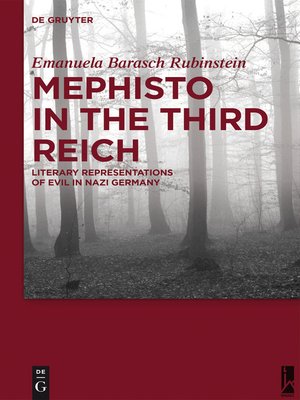Mephisto in the Third Reich
ebook ∣ Literary Representations of Evil in Nazi Germany
By Emanuela Barasch Rubinstein

Sign up to save your library
With an OverDrive account, you can save your favorite libraries for at-a-glance information about availability. Find out more about OverDrive accounts.
Find this title in Libby, the library reading app by OverDrive.



Search for a digital library with this title
Title found at these libraries:
| Library Name | Distance |
|---|---|
| Loading... |
The association of Nazism with the symbol of ultimate evil – the devil – can be found in the works of Klaus and Thomas Mann, Else Lasker-Schüler, and Rolf Hochhuth. He appears either as Satan of the Judeo-Christian tradition, or as Goethe's Mephisto. The devil is not only a metaphor, but a central part of the historical analysis. Barasch-Rubinstein looks into this phenomenon and analyzes the premise that the image of the devil had a substantial impact on Germans' acceptance of Nazi ideas. His diabolic characteristics, the pact between himself and humans, and his prominent place in German culture are part of the intriguing historical observations these four German writers embedded in their work. Whether writing before the outbreak of WWII, during the war, or after it, when the calamities of the Holocaust were already well-known, they all examine Nazism in the light of the ultimate manifestation of evil.






